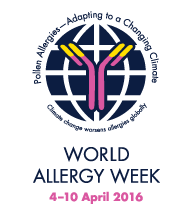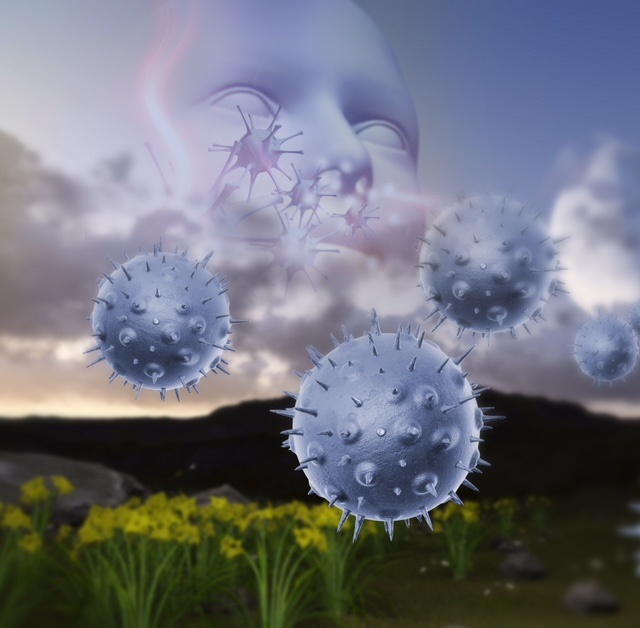How the next generation will suffer – World Allergy Alert on how climate change is affecting our health.
03/10/2016
How the next generation will suffer – World Allergy Alert on how climate change is affecting our health. related allergic respiratory diseases.

Though it is yet well known, climate change represents a serious threat to the respiratory health of both allergy sufferers and non-sufferers worldwide.
Major changes to the climate and atmosphere can have a dramatic impact on physical and biological systems around the world, and subsequently affect human health. It is therefore appropriate to consider the potential contribution of recent changes in climate to the current global allergy epidemic (D’Amato et al., 2014).
There is a growing body of evidence supporting the correlation between climate change, allergens and allergic disease. Regional changes in climate, in particular rising temperatures, and the increased emission of greenhouse gases, namely carbon dioxide, favour airborne allergens and the distribution and severity of allergic disease (D’Amato et al., 2014).
The pollination of allergenic plants, and pollen distribution are largely determined by local weather patterns. As average global temperatures rise, so do the number of hot days and heat waves being experienced in many places throughout the world. Longer periods of warm weather is of concern to allergy sufferers, as warm weather typically promotes plant growth and pollen production. Shorter, milder winters could also mean earlier starts to longer, more severe pollen seasons (D’Amato et al., 2011).
In many regions, a warmer climate is associated with increased relative humidity and chance of rainfall (D’Amato et al., 2011). When air temperatures are warmer, more moisture evaporates from land and oceans into the atmosphere. Warmer air also holds more moisture than cooler air. This is significant to allergens and allergy development in several ways.

Humidity and rain are commonly thought to be of benefit to allergy sufferers by helping to weigh pollen down so it is unable to become airborne, and wash pollen away.
However during the pollen season, humidity and rain often do not provide the symptom relief allergy sufferers envisage. This is because when pollen granules come into contact with moisture they can burst and release hundreds of smaller allergenic particles (ASCIA, 2015; D’Amato et al., 2011). Moisture also encourages plant growth and pollen production. Thus, humidity and rainfall during the pollen season can be to the detriment of allergy sufferers, by increasing the number of circulating allergenic particles (D’Amato et al., 2011)
It is important to note, humidity can heighten an individual’s susceptibility and reactivity to airborne allergens other than pollen. Moisture in the air facilitates the growth and proliferation of both mould spores and house dust mite populations (D’Amato et al., 2011).
A primary cause of global warming and climate change, the increased emission of greenhouse gases, namely carbon dioxide, is considered to be indirectly associated with allergens and allergic disease. In addition to this though, research has identified a direct correlation between carbon dioxide and allergenic plants. Studies of plant responses to elevated carbon dioxide concentrations indicate plants not only exhibit enhanced photosynthesis and faster growth rates but produce increased amounts of more potent pollen (D’Amato et al., 2011).
Climate change is altering local weather patterns, affecting the timing, dispersion, quantity and quality of airborne allergens, and modifying the respiratory health of both allergy sufferers and non-sufferers worldwide. The incidence and prevalence of asthma and other allergic respiratory diseases such as allergic rhinitis (hay fever) is rising and cases are becoming increasingly severe and complex in nature. Disturbingly, the effects of climate change on allergic disease are already being felt and look only to worsen in coming decades.
Want to know more?
E4 Health is hosting a Community Education Initiative on Wednesday April 6, 2016 at E4 Health in Edgecliff. This is a free community event for those who would like to find out more about:
– airborne allergies
– complications of airborne allergies e.g. mouth breathing, snoring
– allergic asthma
– allergy testing
– dental implications of blocked noses in children
For more information or to RSVP visit the E4 Health Facebook page.

References:
Australasian Society of Clinical Immunology and Allergy [ASCIA]. 2015. Thunderstorm asthma: Information for patients, consumers and carers. Accessed March 1, 2016: http://www.allergy.org.au/images/pcc/ASCIA_PCC_Thunderstorm_asthma_2015.pdf
D’Amato, G., et al. 2011. Climate change, migration, and allergic respiratory diseases: An update for the Allergist. World Allergy Organisation, 4, 7: 120-125. Accessed March 1, 2016: http://www.ncbi.nlm.nih.gov/pmc/articles/PMC3488916/
D’Amato, G., et al. 2014. Climate change and respiratory diseases. European Respiratory Review 23, 132: 161-169. Accessed March 4, 2016: http://err.ersjournals.com/content/23/132/161.full.pdf